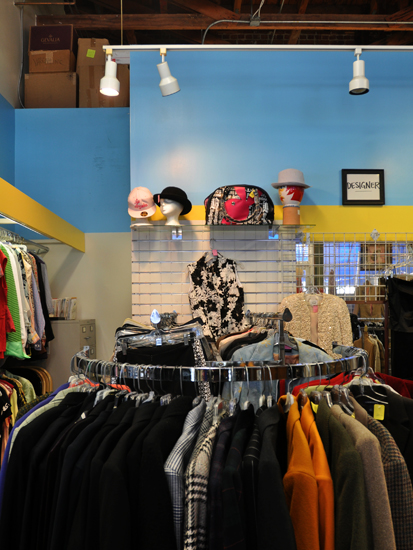UCLA Thrift Shop donates profits to Ronald Reagan UCLA Medical Center

By Alexia Boyarsky
Sept. 19, 2010 3:50 a.m.

On one side of a modest doorway hang five sequined dresses, which come in an array of colors and varying designer labels, reminiscent of a Vegas showgirl’s dressing room.
Around a plain, whitewashed corner hangs an assortment of men’s clothing from the ’90s, along with flashing second-hand televisions and an array of mismatched furniture.
On a Saturday morning, there are seven people browsing the UCLA Thrift Shop, moving quickly among the aisles and checking price labels with browsing eyes. But when customers ultimately leave the store with their purchases, they can leave not only with a bargain deal but also with the knowledge that their money is going toward helping patients at the Ronald Reagan UCLA Medical Center, among other programs.
Located at 11271 Massachusetts Ave. between Wilshire and Santa Monica boulevards, the thrift store is part of a network of philanthropic organizations known as the UCLA Auxiliary. This organization gathers profits from the thrift store and from four other charity shops and distributes it to the medical center for emergency needs, thrift store manager Patty Canales said.
The shop itself houses a collection of second-hand designer goods, casual clothing, furniture and a variety of other everyday goods, many of which come from members of the UCLA community.
“It’s basically a store where, if you need something that you can’t spend a lot of money on, you can come and pick up nice, cheap things,” assistant manager Kay Grigsby said.
Most of the things in the store are marked down to well below a third of their original price, Grigsby said.
“We’ve had donations from Dr. Phil, from the Hilton family, from Gregory Peck, a couch from the Frank Sinatra estate and a few other celebrities,” Canales said.
The store accepts all donations and sends any items that do not meet their standards to donation services such as Planet Aid, which later sends the clothing in bulk to developing nations, Grigsby said.
First set up in 1963 by the Auxiliary in order to generate more revenue for the medical center, the store was initially staffed only with volunteers. As the store started expanding due to increased clientele and donations, the building moved to a larger venue and bought out the property on which it now stands, Auxiliary President Marina Aranoff said.
Although it now runs more like a business with a mixture of volunteers and hired staff, the store sends all of its profits to the Auxiliary, and, over the course of the 47 years it has been in business, has generated millions of dollars in revenue, Aranoff said.
“It’s really the dedication of the workers and the entire UCLA community with their donations that has made this store as successful as it is today,” Aranoff said.
The thrift store has experienced increased success during the ongoing economic recession as customer numbers have risen, Canales said.
One continuing source of income for the stores is its popular sale events.
The thrift store hosts three events annually, in which hundreds of customers come for bargain deals on designer clothing.
The store sets aside seasonal as well as higher-end items for these sales, Canales said, adding that each event generally raises more than $10,000 and hosts over 300 customers.
“They start lining up at 5 in the morning, even though we don’t open doors until 10,” she said. “We give the first 150 people numbers and let them in order later.”
Although the thrift store workers never see the direct effects of their hard work, they are often told stories of specific patients which thrift store money helped. Canales remembers the conjoined twins whose operation at the medical center in 2002 was partly funded by the thrift store.
“It’s worth going through all the junk in order to see the rewards,” she said.

